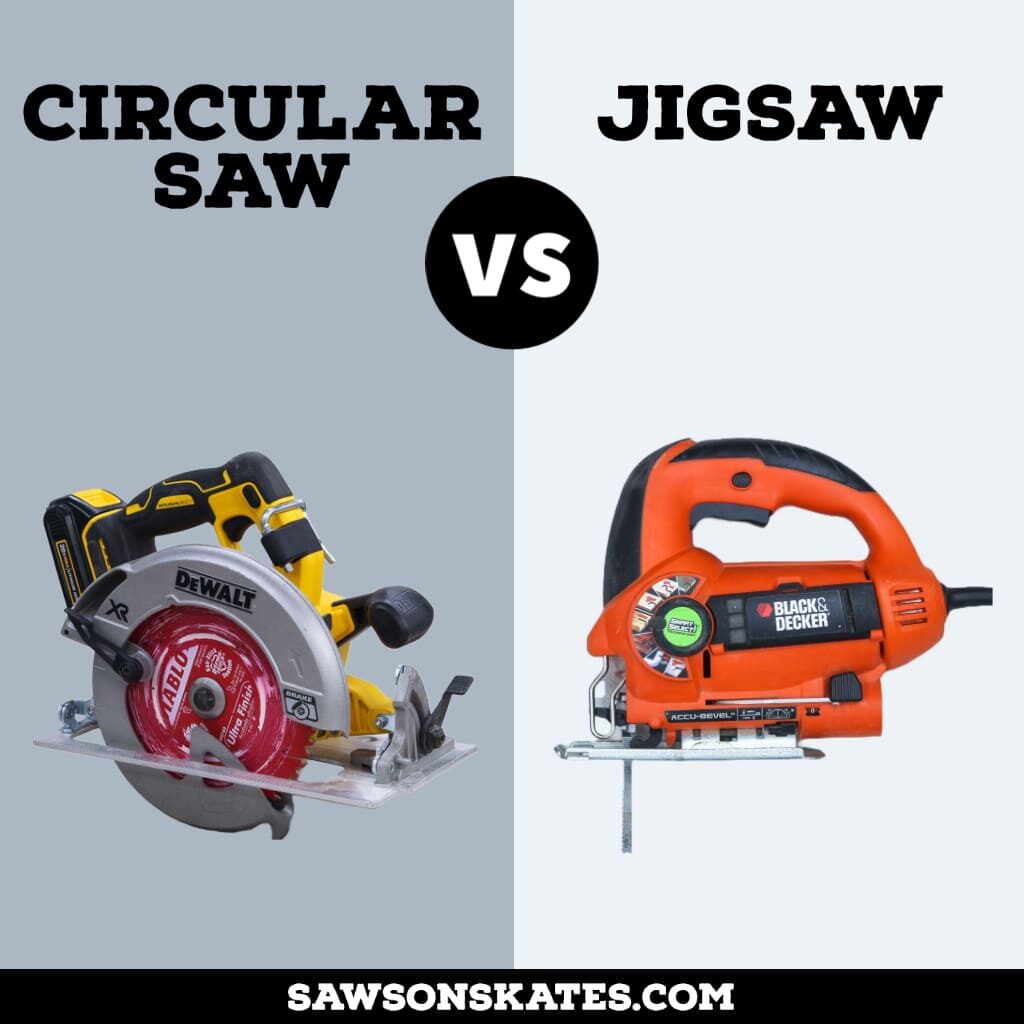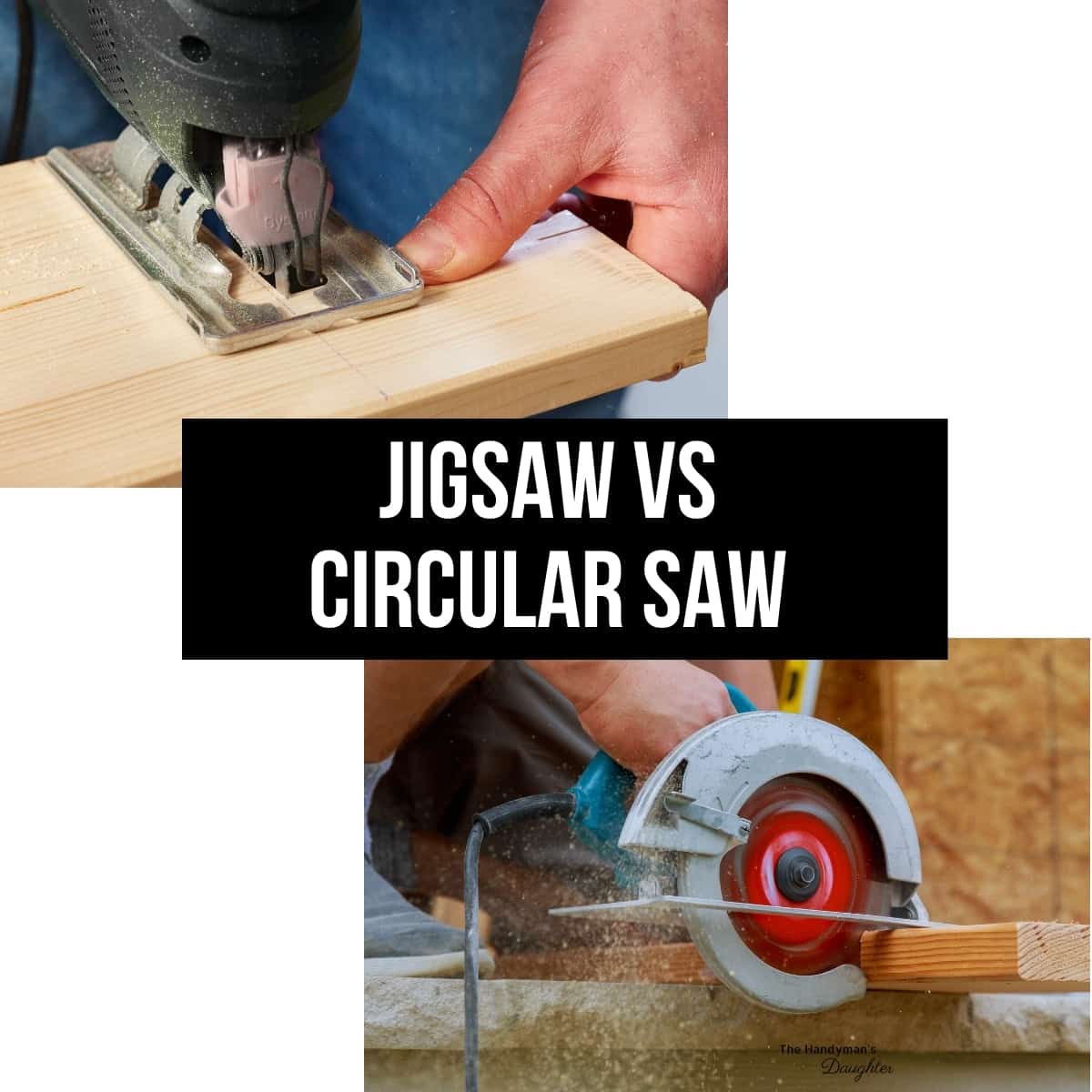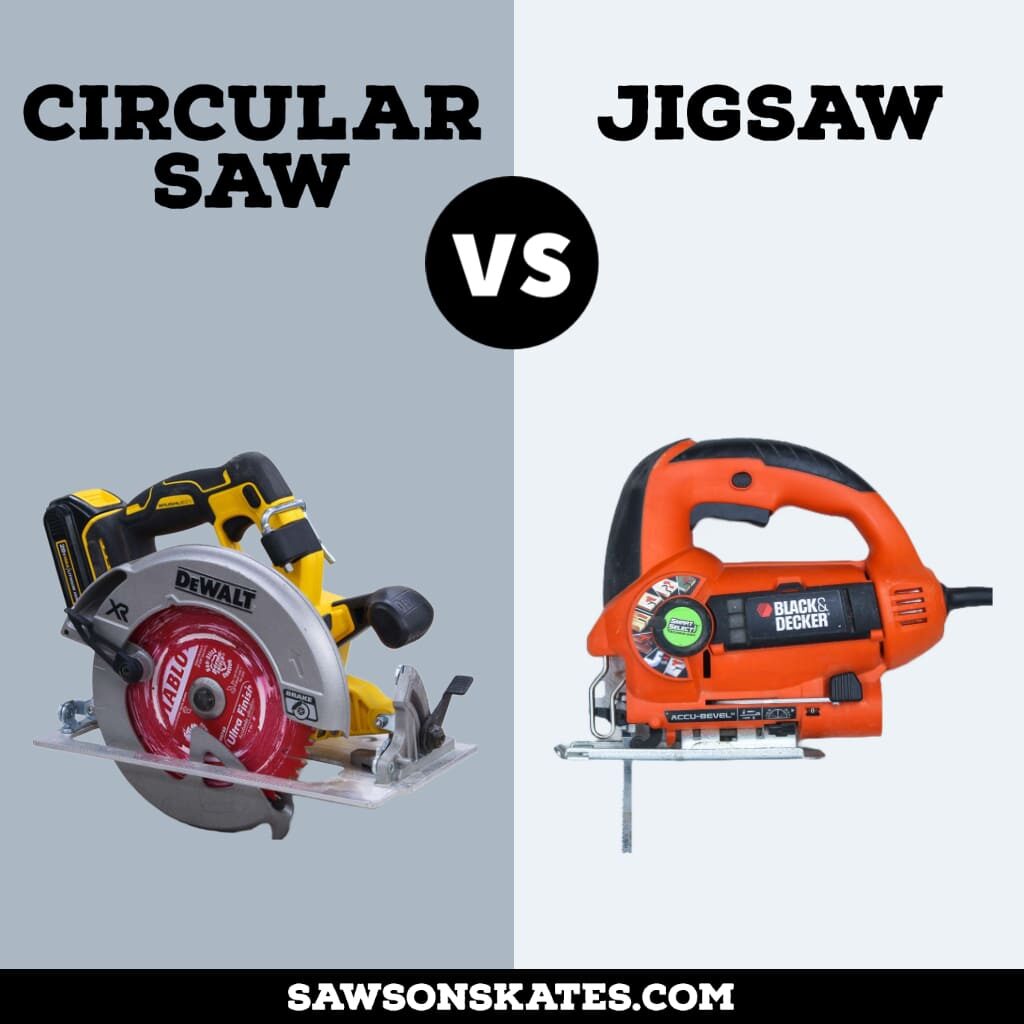Welcome to the world of power tools! Have you ever wondered if you can use a jigsaw instead of a circular saw? Well, you’re in the right place. In this article, we’ll explore whether these two tools are interchangeable and discuss their similarities and differences. So, whether you’re a budding DIY enthusiast or just curious about power tools, let’s dive in and find out if a jigsaw can replace a circular saw!
When it comes to woodworking and cutting materials, having the right tool for the job is essential. Both the jigsaw and circular saw are versatile tools, but they have distinct purposes and features. So, if you’re pondering whether you can swap one for the other, this article will help you understand their capabilities and limitations. Let’s explore the world of these cutting machines and discover if a jigsaw can truly compete with a circular saw!
Before we delve into the specifics, it’s important to understand that each tool has its own strengths. While a circular saw is a workhorse for making straight cuts through thick materials like lumber, a jigsaw offers more maneuverability and the ability to make intricate curved cuts. By understanding their unique features, you’ll be better equipped to decide which tool best suits your needs. So, let’s embark on this exciting journey and explore the world of jigsaws and circular saws together!
Do you have a jigsaw but need to make a long, straight cut? While a jigsaw is great for curved cuts, it’s not ideal for long, straight cuts. A circular saw would be a better choice for that task. Circular saws have a larger blade and are designed for straight cuts in materials like lumber. So, if you need to make a long, straight cut, it’s recommended to use a circular saw instead of a jigsaw.

Can I Use a Jigsaw Instead of a Circular Saw?
When it comes to woodworking and DIY projects, having the right tools is essential. Two common power tools that often come up when cutting materials are the jigsaw and the circular saw. While both tools serve a purpose, you may wonder if you can use a jigsaw instead of a circular saw. In this article, we will dive into the differences between these two tools, their functions, and the scenarios where one might be a better choice over the other.
The Jigsaw: Versatility and Precision
The jigsaw is a versatile tool that excels in making intricate or curved cuts. It features a small, reciprocating blade that moves in an up-and-down motion. This motion allows for greater maneuverability and control, making it easier to navigate corners and curves. With the jigsaw, you can create complex shapes, cut out patterns, make beveled cuts, and even plunge cut into materials.
One of the main advantages of using a jigsaw is its ability to produce precise cuts. The small blade and easy maneuverability make it ideal for detailed work, such as cutting out patterns in plywood or making scrollwork. Additionally, jigsaws often have adjustable speed settings, allowing you to customize the cutting speed based on the material you are working with.
While the jigsaw is excellent for intricate cuts and versatility, it may not be the best choice for making long, straight cuts or cutting through thicker materials. This is where a circular saw comes in handy.
The Circular Saw: Power and Efficiency
Circular saws are known for their power and efficiency when it comes to making straight cuts through large pieces of wood or other materials. They feature a circular blade that spins rapidly, allowing for clean, straight cuts. Circular saws are commonly used in construction projects, such as framing walls or cutting large sheets of plywood.
When it comes to speed and efficiency, the circular saw is the go-to tool. It can quickly cut through thick materials that would be challenging for a jigsaw. Additionally, circular saws often have depth adjustment settings, allowing you to control the depth of the cut.
However, due to the nature of the circular blade and the design of the tool, it can be challenging to make intricate or curved cuts with a circular saw. If you need to make detailed or complex shapes, the jigsaw would be a better choice.
When to Use a Jigsaw Instead of a Circular Saw
While the circular saw and the jigsaw serve different functions, there are scenarios where using a jigsaw instead of a circular saw is more appropriate. Here are a few situations:
Cutting Curves or Intricate Shapes:
If you need to cut curved lines or intricate shapes into a piece of wood or other material, a jigsaw is the tool of choice. Its maneuverability and versatile blade allow for precise cuts along curved lines.
Plunge Cuts:
Jigsaws are great for making plunge cuts, which involve starting a cut in the middle of a piece of material instead of cutting from an edge. This can be useful when creating openings for plumbing or electrical work.
Scrollwork and Decorative Cuts:
When it comes to creating elaborate scrollwork or decorative cuts in wood or other materials, a jigsaw is the tool you want. Its ability to navigate corners and curves makes it perfect for detailed artistic work.
While the jigsaw can handle these situations, it’s worth noting that a circular saw still has its place in many woodworking applications. Its efficiency and power make it an essential tool for cutting long, straight lines or thicker materials.
The Verdict: Jigsaw or Circular Saw?
Ultimately, whether you can use a jigsaw instead of a circular saw depends on the task at hand. If you need to make intricate cuts, navigate curves, or create detailed shapes, the jigsaw is the tool for you. However, if you need to make long, straight cuts through thick materials, or cut large pieces of plywood, the circular saw is the better choice.
As a woodworking enthusiast or DIYer, having both tools in your arsenal will give you the versatility and capabilities to tackle a wide range of projects. Each tool has its strengths, and knowing when to utilize them will ensure the best results for your woodworking endeavors.
Benefits of Using a Jigsaw Instead of a Circular Saw
While the circular saw may be the more powerful tool when it comes to long, straight cuts, there are several benefits to using a jigsaw instead. Here are a few advantages of choosing a jigsaw:
Versatility:
The jigsaw’s ability to navigate curves, make intricate cuts, and plunge cuts gives it an edge when it comes to versatility. It can handle a wide range of projects, from creating decorative patterns to cutting out holes for outlets or plumbing.
Precision:
When it comes to precise cuts, the jigsaw shines. Its small blade and maneuverability allow for detailed work, perfect for creating intricate shapes or cutting along curved lines.
Safety:
Due to its design and the way the blade moves, the jigsaw is generally considered a safer tool to use compared to a circular saw. The blade is enclosed, reducing the risk of accidental cuts or injuries.
User-Friendly:
Jigsaws are generally more user-friendly, especially for beginners or those who may not have as much experience with power tools. The adjustable speed settings and easy maneuverability make it a tool that can be comfortably used by all skill levels.
Less Material Waste:
When making intricate cuts or following curves, the jigsaw produces less material waste compared to a circular saw. This is especially beneficial if you are working with expensive or limited materials.
While these benefits make the jigsaw an appealing choice, it’s essential to consider the limitations and specific functions of each tool before deciding which one to use for a particular project.
Can I Use a Jigsaw Instead of a Circular Saw for All Projects?
While the jigsaw offers versatility and precision, it is not a tool that can replace a circular saw for all projects. There are specific scenarios where the circular saw is the better choice. Here are a few instances where a circular saw should be used over a jigsaw:
Straight Cuts:
If you need to make long, straight cuts through thick materials, such as cutting plywood sheets or trimming large boards, a circular saw is the most efficient tool. Its power and the ability to hold a straight line make it ideal for these types of cuts.
Ripping Lumber:
Ripping refers to cutting a piece of lumber lengthwise along the grain. This type of cut requires a circular saw, as it allows for accurate, straight cuts through the entire length of the lumber.
Mitre Cuts:
A mitre cut is an angled cut that is commonly used in trim work, such as creating corners for baseboards or crown molding. Circular saws equipped with a mitre guide or a miter box are the appropriate tools for making these cuts.
It’s important to assess the specific requirements of your project and consider the type of cuts you need to make. While the jigsaw may be more versatile in certain situations, a circular saw is often necessary for precise straight cuts and heavy-duty woodworking tasks.
Can I Use a Jigsaw Instead of a Circular Saw? Key Takeaways
- A jigsaw can be a good alternative to a circular saw for certain tasks.
- Jigsaws are better suited for making curved cuts and intricate designs.
- Circular saws are more powerful and efficient for making straight cuts in thick materials.
- Using a jigsaw instead of a circular saw may require more time and effort.
- Consider the specific requirements of your project before deciding which tool to use.
Frequently Asked Questions
Are you wondering if you can use a jigsaw instead of a circular saw?
Here are the answers to some commonly asked questions!
1. Can a jigsaw replace a circular saw for all types of cuts?
While a jigsaw is a versatile tool, it may not be the best choice for all types of cuts that a circular saw can handle. Jigsaws are primarily used for curved or intricate cuts, while circular saws are designed for straight cuts and more aggressive material removal. If you need to make long, straight cuts in materials like plywood or lumber, a circular saw is the better option. However, if your project requires curved or detailed cuts, a jigsaw can be a great alternative.
So, while a jigsaw can be used for some tasks that a circular saw can perform, it’s important to consider the specific requirements of your project before deciding which tool to use.
2. Can a jigsaw provide the same level of precision as a circular saw?
Although a jigsaw can provide good precision, it may not match the level of accuracy that a circular saw offers for straight cuts. Circular saws are designed with a base plate and a guide, allowing for more consistent and accurate cuts over long distances. On the other hand, jigsaws are handheld tools and can be more challenging to control in terms of maintaining a perfectly straight line.
If precision is of utmost importance and your project involves long, straight cuts, using a circular saw would be recommended. However, if your project allows for some margin of error or requires curved cuts, a jigsaw can still provide satisfactory precision.
3. Can a jigsaw cut through thick materials like a circular saw?
A jigsaw can cut through a variety of materials, but it may not be as efficient or suitable for cutting thick materials as a circular saw. Circular saws are designed with powerful motors and large blades, making them capable of cutting through thick materials like plywood, lumber, or metal with ease. Jigsaws, on the other hand, have smaller blades and are better suited for thinner materials.
While a jigsaw can handle thinner materials like plastic, MDF, or thin plywood, it may struggle or take longer to cut through thicker materials. If your project involves heavy-duty cutting of thick materials, a circular saw would be the better choice.
4. Can a jigsaw be used for plunge cuts like a circular saw?
Plunge cuts, which involve starting a cut in the middle of a material, are generally easier to perform with a circular saw than with a jigsaw. Circular saws have a retractable blade guard that allows them to make plunge cuts without damaging the material or the tool. On the other hand, jigsaws are not specifically designed for plunge cuts, and it can be more challenging to start a cut accurately in the middle of a workpiece.
While it is possible to make plunge cuts with a jigsaw, it requires careful handling and may not be as precise as with a circular saw. If your project involves frequent plunge cuts, it would be more convenient to use a circular saw.
5. Can a jigsaw be a safer alternative to a circular saw?
Both jigsaws and circular saws have their own safety considerations, and it’s important to take proper precautions when using any power tool. Jigsaws are generally considered to be safer than circular saws due to their smaller blade size and lower risk of kickback. Additionally, jigsaws are often equipped with blade guards and have a slower cutting speed, which can reduce the chances of accidents.
However, it’s crucial to prioritize safety regardless of the tool you use. Always wear appropriate safety gear like goggles and gloves, and ensure that you understand and follow the manufacturer’s instructions for your specific tool. If you’re new to using power tools, consider seeking guidance from a professional or taking a safety course to familiarize yourself with best practices.

CIRCULAR SAW VS. JIGSAW…Which One Should You Own?! (FULL COMPARISON—New DIYers Should Watch!!)
Summary
If you’re wondering whether a jigsaw can be used instead of a circular saw, the answer is yes, but with some limitations. While a jigsaw can make straight cuts, it’s better suited for curved or intricate cuts. The jigsaw is lighter and easier to handle, but a circular saw is more powerful and efficient for long, straight cuts.
If you only need to make a few straight cuts or have limited space, using a jigsaw can get the job done. However, for larger projects or when precision and speed are important, a circular saw is the better tool to use. It’s always best to choose the tool that matches your specific needs and the type of work you’re doing.
